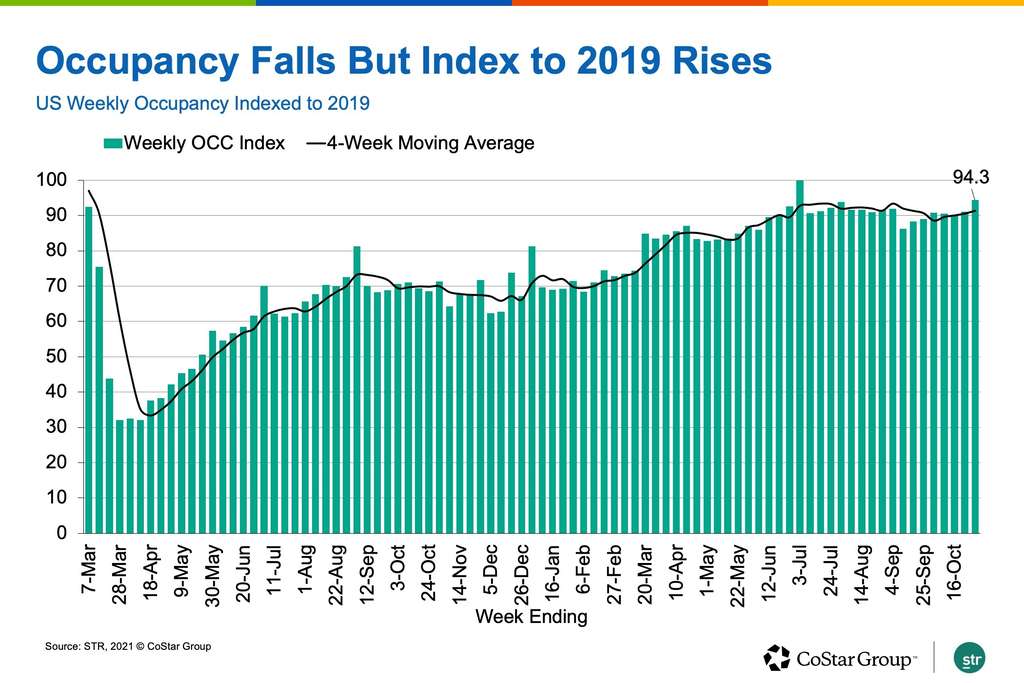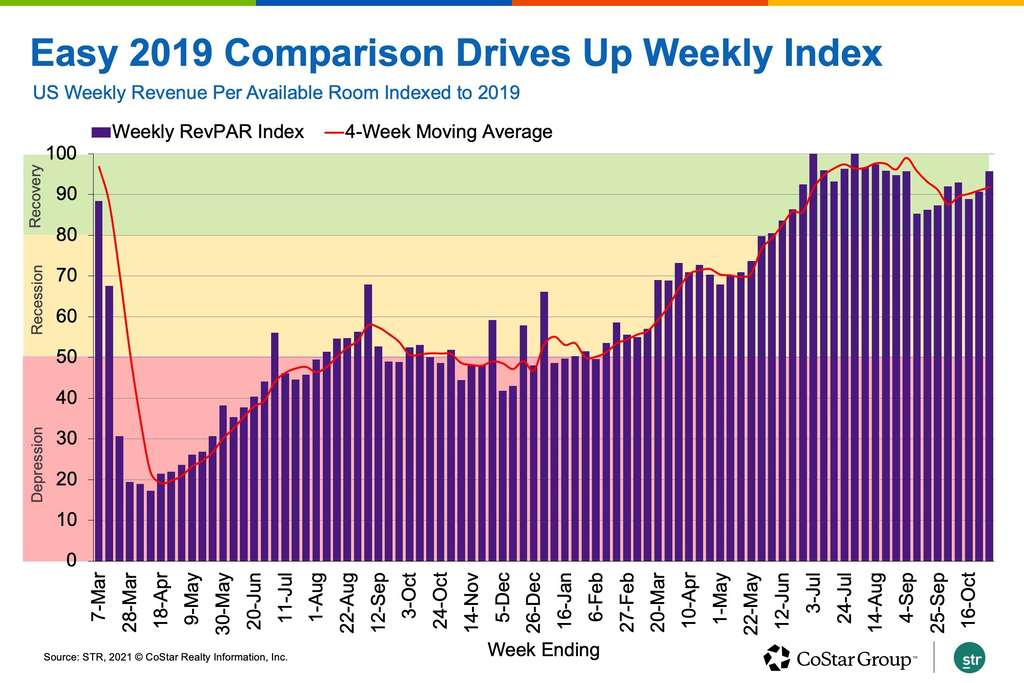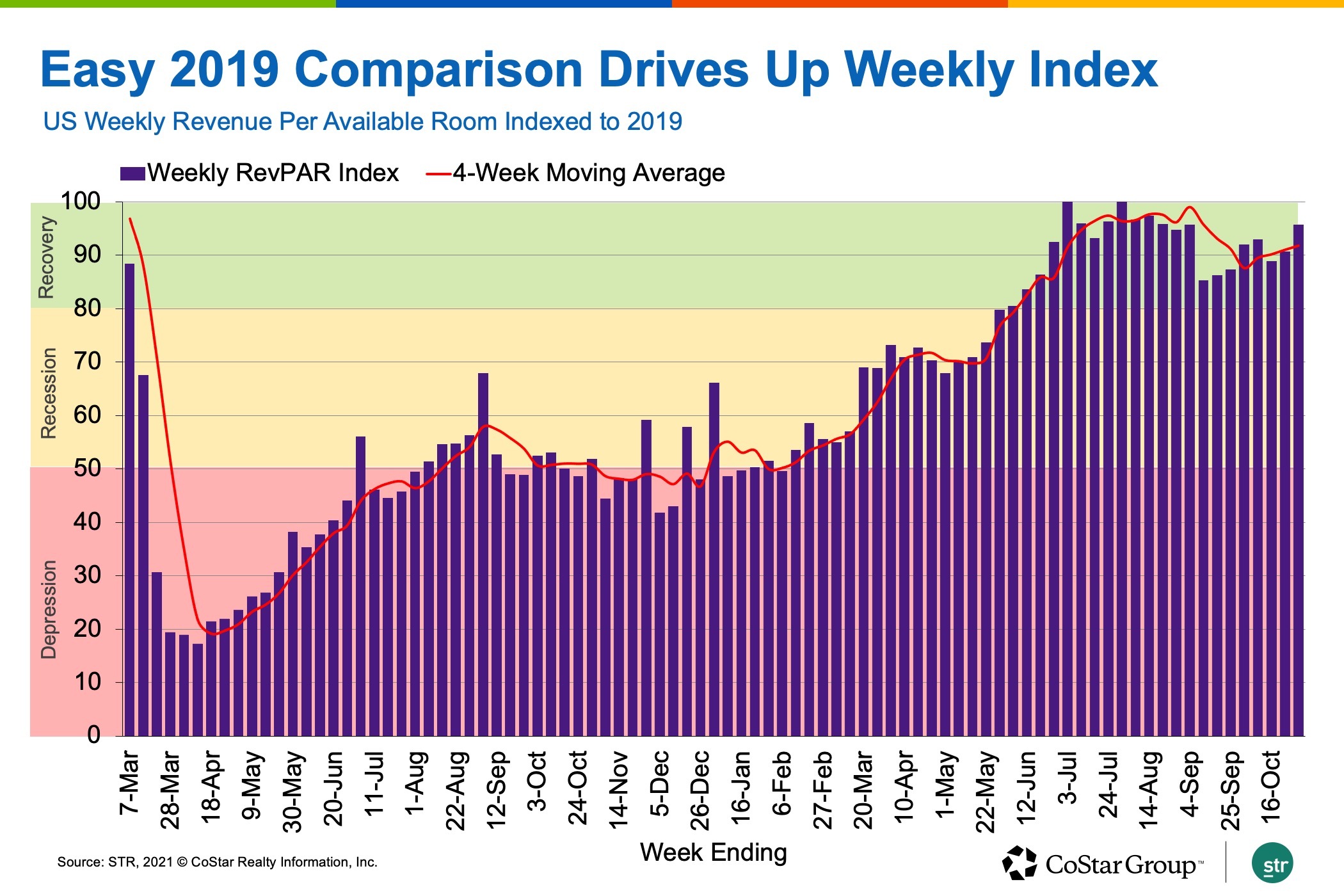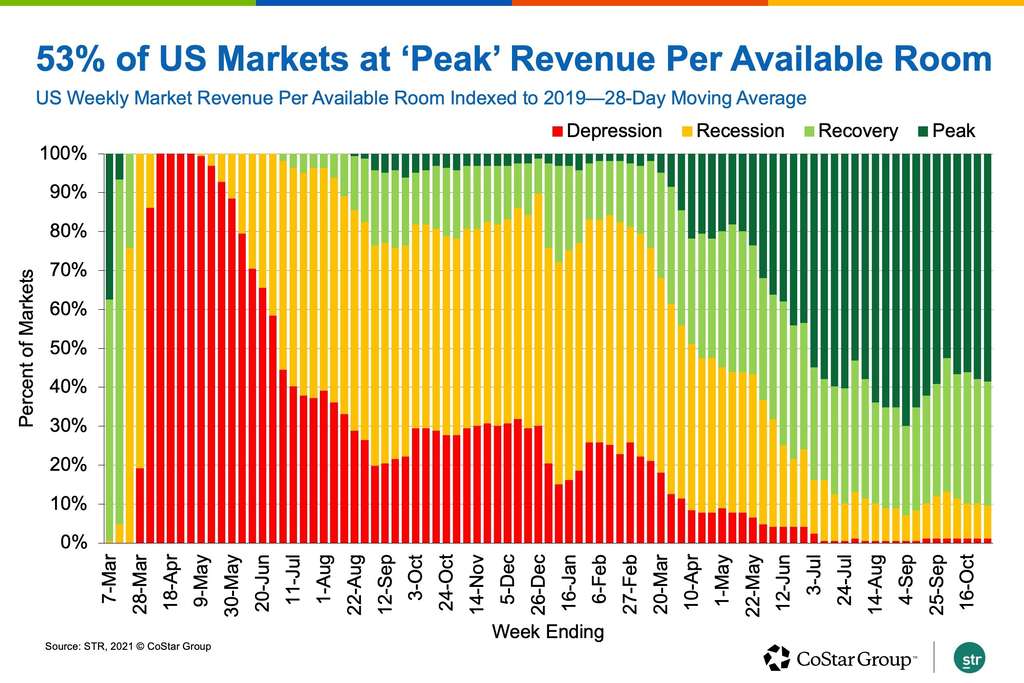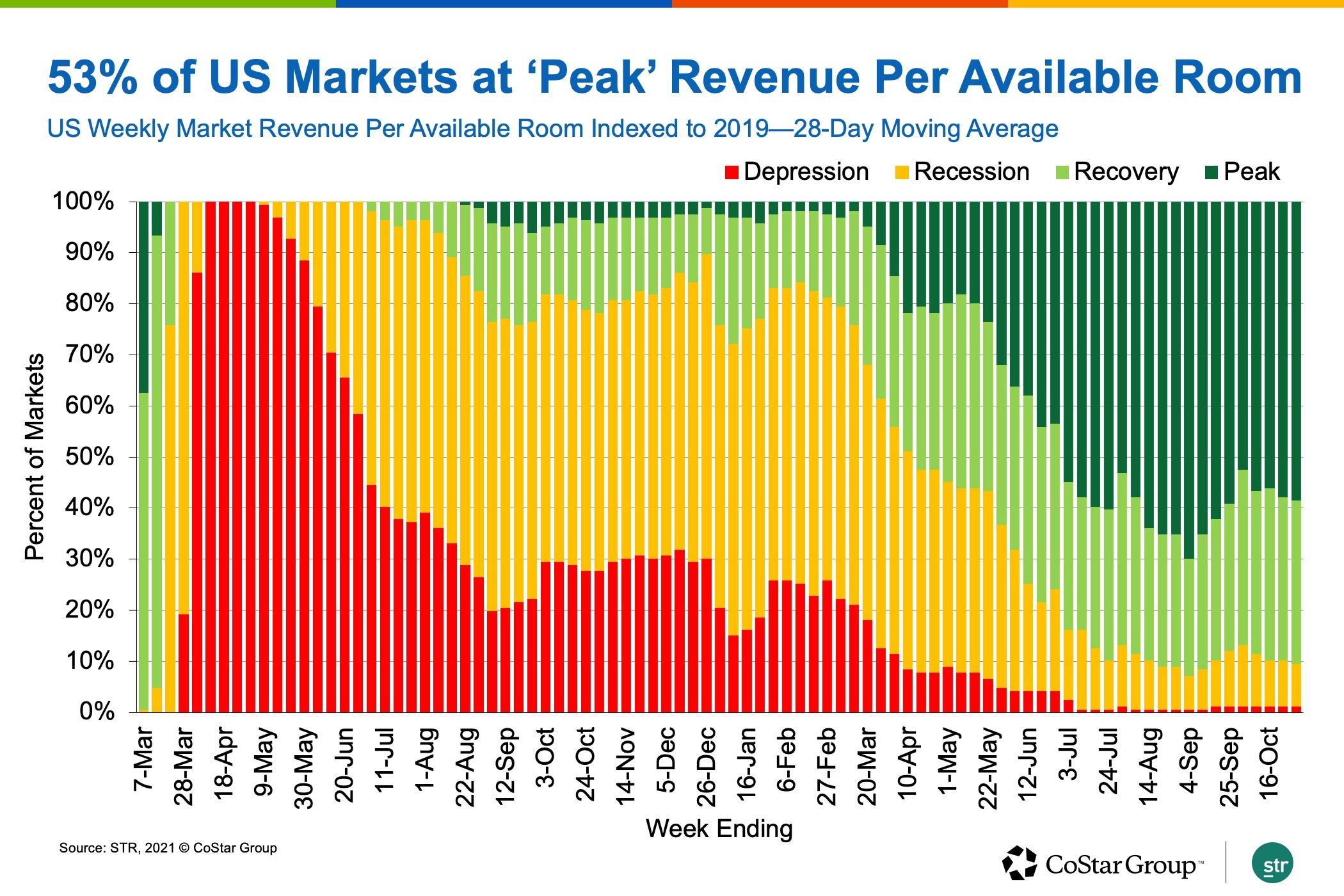US Hotel Occupancy at 25-Week Low, But Performance Looks a Lot Like 2010
Comparisons to Past Years Show Performance Near Pre-Pandemic Levels
U.S. hotel occupancy dropped to a 25-week low in the week ending Oct. 30, but comparisons to past years indicate that industry performance is not far off pre-pandemic levels.
Weekly occupancy was 58.9%, down from 63.9% the previous week but 94.3% of what it was during the same week in 2019, when Halloween — which always negatively impacts hotel demand — was on a Thursday. The index to 2019 rose from 90.9% the previous week.
Halloween falling on a Thursday in 2019 affected more days, resulting in lower business and group travel demand during the week, while weekend demand was mostly unscathed.
This year’s occupancy decline was most pronounced on the weekend, down 10 percentage points, compared to a three-point decline on the weekdays.
Performance overall matched closely with the same week in 2010, which was the last time Halloween fell on a Sunday.
Coming after the Great Recession, 2010 was also a rebuilding year. The week before Halloween week, 2010 occupancy was 63.8%, which was nearly identical to this year’s level.
Given that same starting point, 2021’s performance looks better than what a casual review of the numbers suggest. In the week ending Oct. 30, 2010, weekly occupancy fell by six percentage points to 57.8% versus the five-percentage point drop in 2021. Weekday occupancy was slightly stronger in 2010 by 1.4 percentage points, but 2021’s weekend occupancy was far better at 65.7% compared to 57.9% in 2010.
More than 70% of hotels reported occupancy above 60% for the weekend this year, with 65% reporting that level of occupancy or more on the weekdays.
Thus, even with Halloween, demand held up well, which is encouraging.
U.S. hotel average daily rate also fell in the week of Oct. 30, dropping 5% from the previous week. However, ADR indexed higher to 2019, rising by two points. The ADR index has increased in five of the past six weeks, and when adjusted for inflation, the index was at its highest level of the past three weeks.
This week’s ADR decrease, however, was higher than what was reported in 2010, when weekly ADR fell by only 1.2%. The weekend decline was much more severe as weekend ADR dropped by 8.8% versus 3.2% in 2010, which is surprising given the higher occupancy level this year.
For hotels outside of the top 25 U.S. markets, weekend ADR fell by 10.5%. Even with the large decrease, weekend ADR was 15% higher than in 2010 — adjusted for inflation — whereas weekday ADR was slightly below the levels reported 11 years ago.
Weekly revenue per available room slumped by its largest amount since the start of the year, down 12.3% from the previous week, while the index to 2019 rose by 5.1 points to 96% on an easy comparison. Adjusted for inflation, 90 markets had weekly RevPAR that was higher than what it was in the comparable week of 2019.
On a 28-day moving total basis, 77 markets — the most of the past six weeks — were at “peak” RevPAR on an inflation-adjusted basis, exceeding 2019 levels. Another 61 markets were in “recovery,” with RevPAR between 80% and 100% of 2019 levels; 26 markets were in “recession,” with RevPAR between 50% and 80% of 2019. As they have been since the start of the pandemic, two markets — San Francisco and San Jose — remained in “depression,” with RevPAR below 50% of 2019 levels.
About STR
STR provides premium data benchmarking, analytics and marketplace insights for the global hospitality industry. Founded in 1985, STR maintains a presence in 15 countries with a corporate North American headquarters in Hendersonville, Tennessee, an international headquarters in London, and an Asia Pacific headquarters in Singapore. STR was acquired in October 2019 by CoStar Group, Inc. (NASDAQ: CSGP), the leading provider of commercial real estate information, analytics and online marketplaces. For more information, please visit str.com and costargroup.com.

